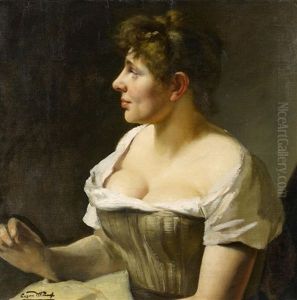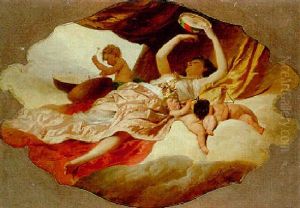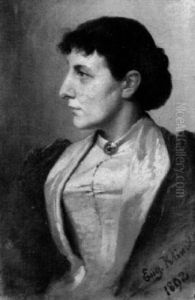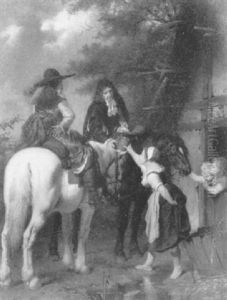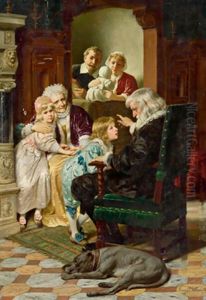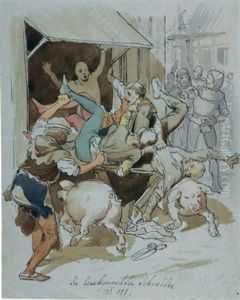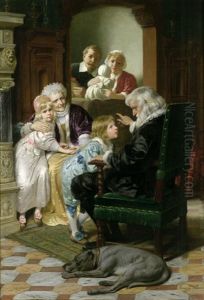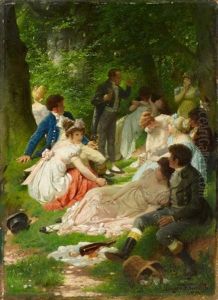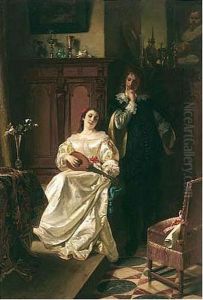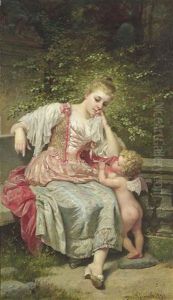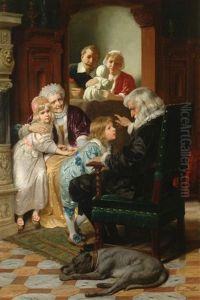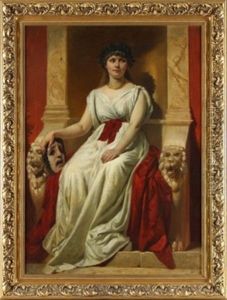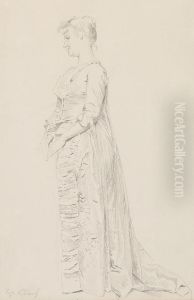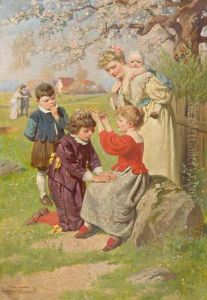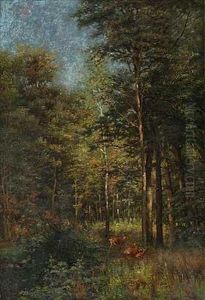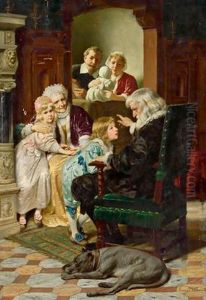Eugen Johann Georg Klimsch Paintings
Eugen Johann Georg Klimsch was a German painter and illustrator born on January 8, 1839, in Frankfurt am Main, Germany. His artistic lineage was notable, as he was the third in a line of prominent artists from the Klimsch family. His father, Karl Klimsch, was a highly regarded engraver, and his grandfather, Johann Klimsch, was also an accomplished painter. This artistic environment played a significant role in shaping his early education and eventual career path.
Eugen Klimsch showed a strong inclination towards art from a young age, and his talent was nurtured by his family's artistic tradition. He received his initial training from his father and then furthered his education at the Städelsches Kunstinstitut (Städel Art Institute) in Frankfurt, where he studied under Jakob Becker, a respected painter of the time. Klimsch's early work was influenced by the academic style of painting, which emphasized classical themes, historical subjects, and a precise, realistic approach to representation.
In the 1860s, Klimsch moved to Paris, which was then the epicenter of the art world. During his time there, he was exposed to various art movements and styles, including Realism and the burgeoning Impressionist movement. The experience in Paris broadened his artistic vision, and he began to incorporate a lighter palette and a looser brushwork into his paintings, reflecting a blend of academic training and the new influences he encountered.
Throughout his career, Eugen Klimsch was known for his genre scenes, portraits, and landscape paintings. His works often depicted serene, idyllic settings and were characterized by a sense of peacefulness and a refined, delicate touch. Klimsch's illustrations were also highly regarded and appeared in various publications, further establishing his reputation as a versatile and skilled artist.
Despite his success, Klimsch remained connected to his roots in Frankfurt, where he was a respected member of the local art community. He contributed to the cultural life of the city through his participation in art exhibitions and his involvement with artistic societies. His work was widely collected and is represented in several German museums.
Eugen Johann Georg Klimsch passed away on March 14, 1896, in his hometown of Frankfurt am Main. Although he is not as widely known today as some of his contemporaries, his contributions to German art in the 19th century continue to be appreciated by art historians and collectors who value the quiet beauty and technical skill evident in his paintings and illustrations.
